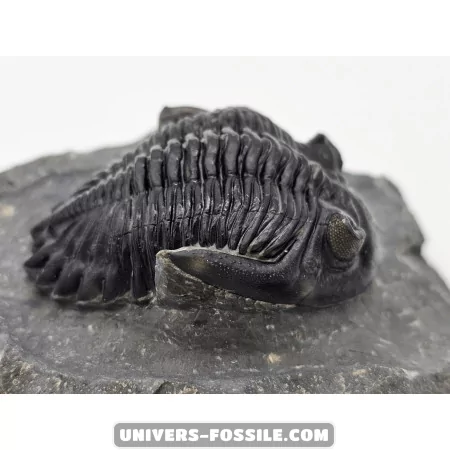Hollardops Trilobites - Fascinating Extinct Creatures from Ancient Oceans

Hollardops Trilobites
Hollardops trilobites are an extinct species of trilobites, a group of marine arthropods that thrived millions of years ago. These fascinating creatures were among the prominent inhabitants of the Paleozoic oceans, offering paleontologists valuable insights into ancient marine life.
Anatomy of Hollardops Trilobites
- Segmented body: Like all trilobites, Hollardops had a body divided into three longitudinal parts - the cephalon (head), the thorax (body), and the pygidium (tail).
- Calcified exoskeleton: The outer shell of trilobites was formed of chitin and calcite, providing rigid protection against predators.
- Compound eyes: Hollardops trilobites possessed large compound eyes, consisting of many small hexagons, giving them a panoramic view of their environment.
- Antennae: Although few fossilized specimens have retained their antennae, it is likely that Hollardops had them to detect environmental stimuli.
- Segmented legs: Trilobites used their segmented legs to move along the seafloor, sifting through the sediment in search of food.
Explore the detailed anatomy and unique features of Hollardops trilobites to uncover the ancient mysteries of these intriguing marine creatures.
Hollardops Trilobites
Discover the fascinating world of Hollardops trilobites, ancient marine creatures that roamed the seas during the Middle to Upper Devonian period, around 390 to 370 million years ago.
Habitat
Hollardops trilobites have been unearthed in geological formations from the Devonian era, showcasing their role as both predators and prey in the vibrant marine ecosystems of that time. Fossils of Hollardops have been found in regions worldwide, offering insights into their distribution and evolution.
Lifestyle
Like many trilobite species, Hollardops likely dwelled on the seafloor, feeding on detritus and small organisms in the substrate. Their intricate appendages allowed them to sift through sediment and capture their food efficiently. Despite their protective exoskeleton, they were still targeted by predators like cephalopods and predatory fish.
Extinction
The story of Hollardops, like all trilobites, eventually succumbs to extinction, marking the end of an era for these remarkable marine creatures. Explore the legacy of Hollardops trilobites and their significance in understanding ancient marine ecosystems.
Hollardops Trilobites - Unique Fossils from Ancient Oceans
Trilobites are one of the most intriguing and diverse groups of extinct marine arthropods that thrived for over 270 million years. The fascinating Hollardops trilobites, known for their distinctive features, eventually became extinct by the end of the Permian period around 250 million years ago during the mass extinction event that wiped out most life on Earth.
The exact causes of trilobite extinction remain a topic of debate among paleontologists, with climatic changes, geological events, and evolutionary pressures being significant factors. Despite their extinction, Hollardops trilobites and other members of their order continue to captivate scientists and paleontology enthusiasts worldwide.
Their well-preserved fossils offer valuable insights into the biodiversity and evolution of ancient oceans, enabling us to delve deeper into the history of life on Earth. In the evolutionary timeline, Hollardops trilobites hold a special place as they represent unique specimens that contribute to our understanding of prehistoric marine ecosystems.
In conclusion, Hollardops trilobites are captivating examples of the rich diversity of ancient marine life. Their fossils serve as priceless treasures that transport us back in time, allowing us to explore the mysteries of prehistoric oceans and gain a deeper appreciation for the wonders of the past.
